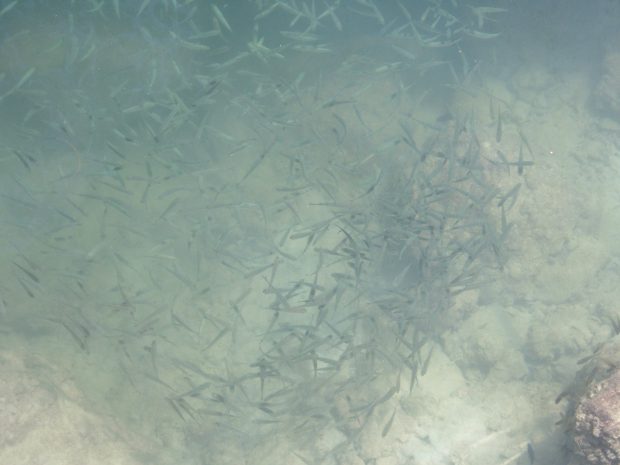The Mid-Atlantic Unmanaged Forage Omnibus Amendment
By Fissues on April 25, 2017
[dropcap]I[/dropcap]n August of 2016, the Mid-Atlantic Fishery Management Council put forward what may be one of the most forward-thinking ecosystem protection actions we’ve seen on the East Coast.
To put it simply, the Council’s Unmanaged Forage Omnibus Amendment would put a full stop on any new/potential industrial-scale fishery in the region’s federal waters for forage fish (sandeels, silversides, bay anchovies, halfbeaks, sardines, krill, currently unmanaged mackerels, herrings and squids, and a bunch of other things the Council determined to be important forage, and/or subject to large-scale extraction), at least until any such fishery could be scientifically proven to be sustainable. Not just sustainable from a harvest perspective, but sustainable from an ecosystem one. That means ensuring enough remain in the water to satisfy the needs of predators like striped bass, bluefish, tunas, billfish, whales, etc.

Micro bait. Photo: Derr
This is an enormously significant action because it protects all these species — the lower levels of the food-chain — from low-value/high-volume fisheries (i.e. those fisheries that are worth pennies on the pound, and thus need to be caught in extremely high volume for them to be profitable).
Given the dynamics of current directed fisheries, a lot of which are either declining or facing increasingly constraining regulations, it is very likely that industry was eyeing new low-value/high-volume fisheries for things like sandeel, etc. In fact, there were rumors abound of commercial fishermen in New England gearing up for such fisheries.
Such unmanaged, directed, high-volume/low-value fisheries on bait fish would be devastating to so many recreational fisheries. Anyone who’s spent more than a few days on the water knows, if you want to find striped bass, bluefish, etc., or tuna, mahi and bill fish, you’ve got to first find the bait concentrations. It is unequivocally true that spatial and temporal forage fish aggregations drive angling opportunity. Removing concentrations from any given area would kill such opportunity.
So this is a critical action, not just for the sustainability of the recreational fishing industry but to the sustainability of entire marine ecosystems.






